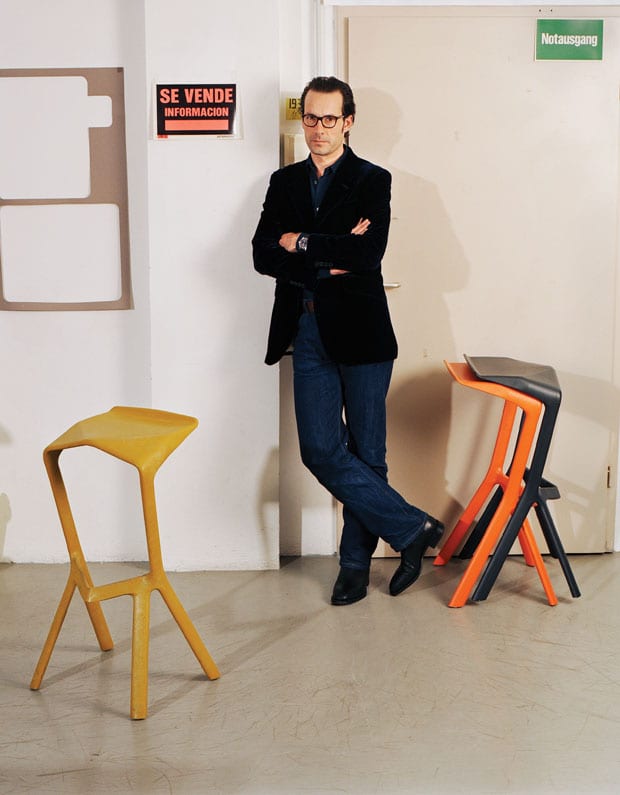
words Johanna Agerman
The industrial designer is curating a series of small design shows for the Museum Store in Berlin. With a point to prove to unimaginative stockists, Grcic relished the opportunity.
How did your series of Cast exhibitions come about?
Joerg Koch, who is running the Museum Store in Berlin, asked me to curate a series of exhibitions about design in this vitrine that I have designed for their space. I liked the idea, and we came up with the name Cast, which I think is quite nice.
What does the name refer to?
One reference is casting a shadow, the other could be an imprint – casting in the sense of moulding.
Will the Cast series be dedicated to certain types of objects?
Things that are industrially made and in production. For me these vitrines are like the ones you find in natural history museums, like cabinets full of butterflies showing an evolution of things. Showing different kinds of the same object was always attractive to me.
So can the exhibition be described as a “best of”?
No, I really hate things that are “best of”. My selection is never about this, it is much more emotional and personal than that, like my favourites. It is also spontaneous, because if I made the selection now it might be different.
What made you decide to dedicate the first exhibition to task lamps?
We were quite late in preparing this exhibition so I needed to find a theme that was relatively easy to realise. But I like it anyway because it makes quite a dry start, and I like that provocation. We’re not doing a beautiful gallery exhibition, it’s very industrial. These task lights are very functional and therefore their form is conditioned by their function. It stands in stark contrast to a lot of displays that you see around at the moment both in design shops and galleries.
What do you think is missing from spaces that sell or show design?
Very often I find that in design shops there is no passion or subjectivity. The selection is based on other kinds of parameter, like if they sell. A lot of the time it’s really uninspired or lazy. Shops always show the same things and I get so disappointed because I know of all the other things that are on the market. I generalise, of course, but I find that retail is becoming the whole system. When you go to trade fairs and see what designers are creating and what producers are making, there’s a lot of good stuff around, but at your local shop none of that seems to be available. Not that I can change it with my exhibition, which is so small and in a way so elitist, but the project is a nice little exercise and a challenge – to see how much better I can do. Because I always complain and then when you have to make a selection it’s in fact very difficult.
What do you mean by elitist?
I think that my role as a designer is very elitist. I work for a small niche of top companies and even if not everything I do is avante garde, it’s still more exclusive than inclusive. When we design things it’s not for the masses. But it’s very important and it took me a while to discover that this is the role that we have to play. You know, designing for the masses is an elusion. In the end it is much more beneficial creating strong, more radical products and then somehow they trickle down to a broader acceptance. We have such a privileged position as designers, and we should really use it – my role as curator here is similar.
So you are not looking to appeal to the crowds with this exhibition?
No, the exhibition won’t draw big crowds and that’s very nice, that actually gives us a huge freedom. It’s often the small projects that have the bigger impact and don’t have the pressure attached to bigger projects.


















